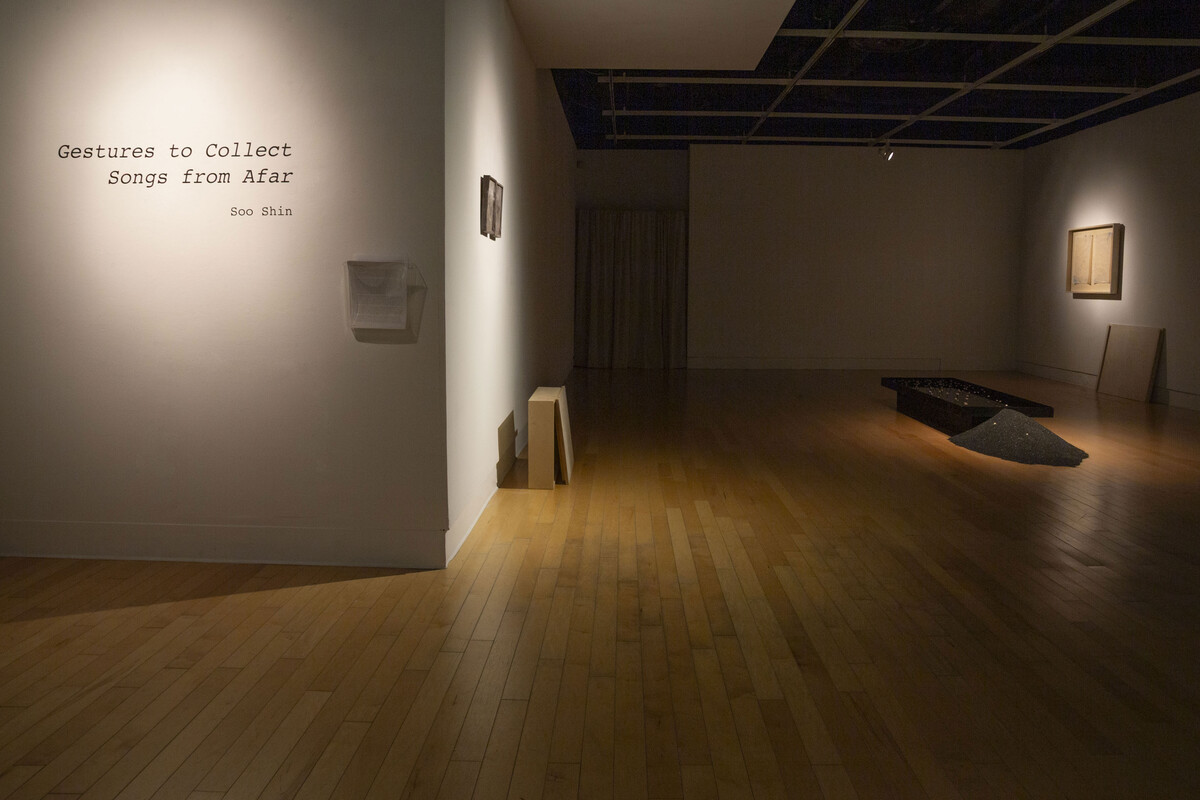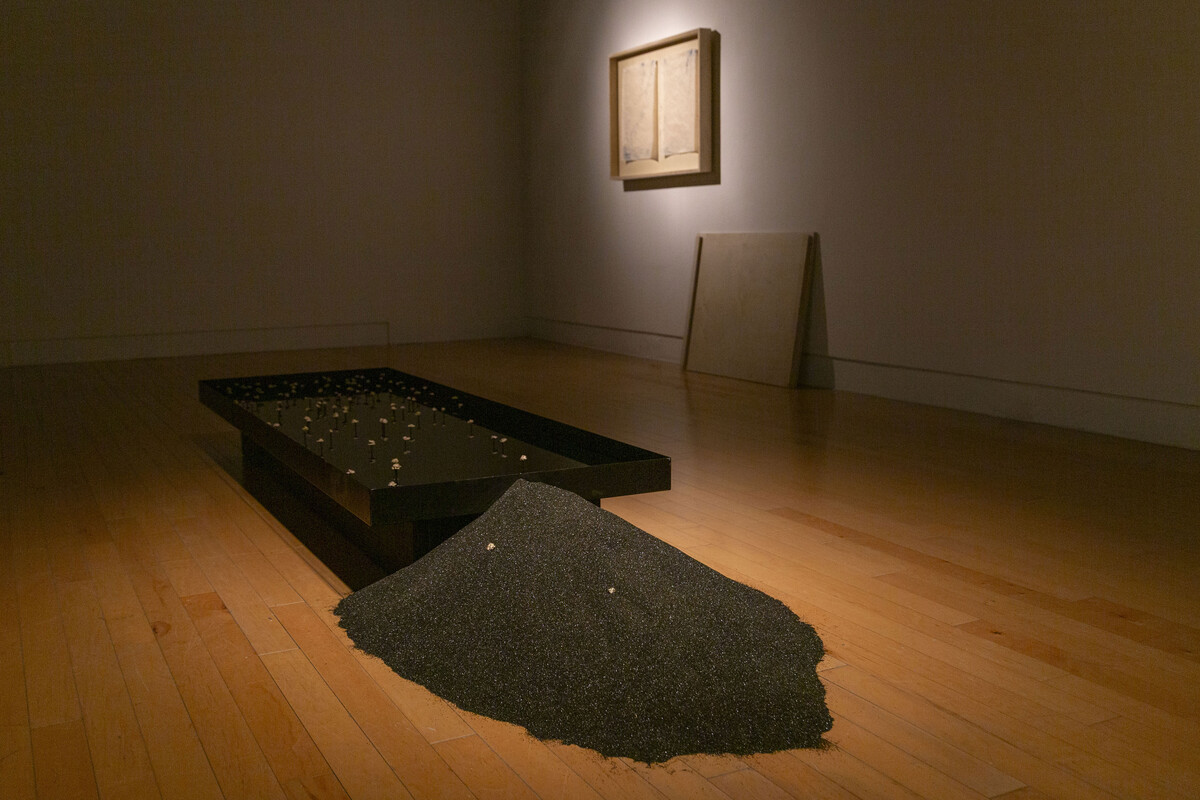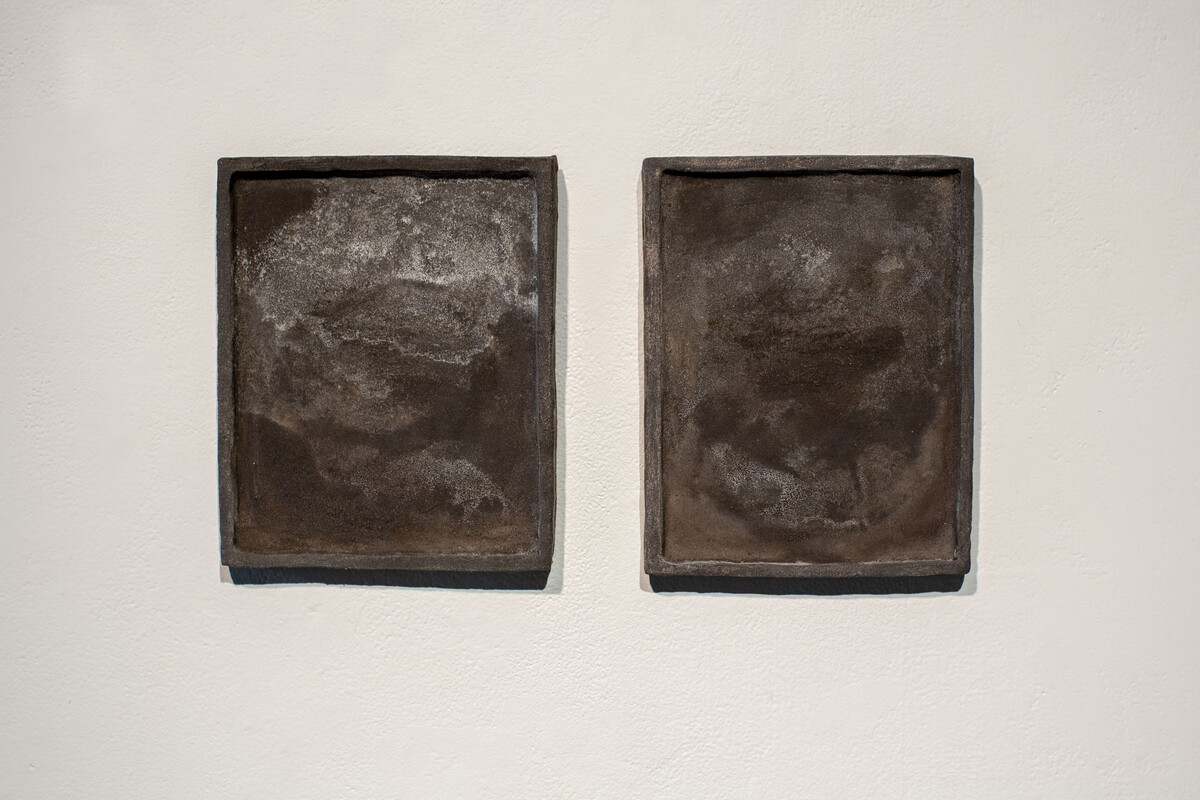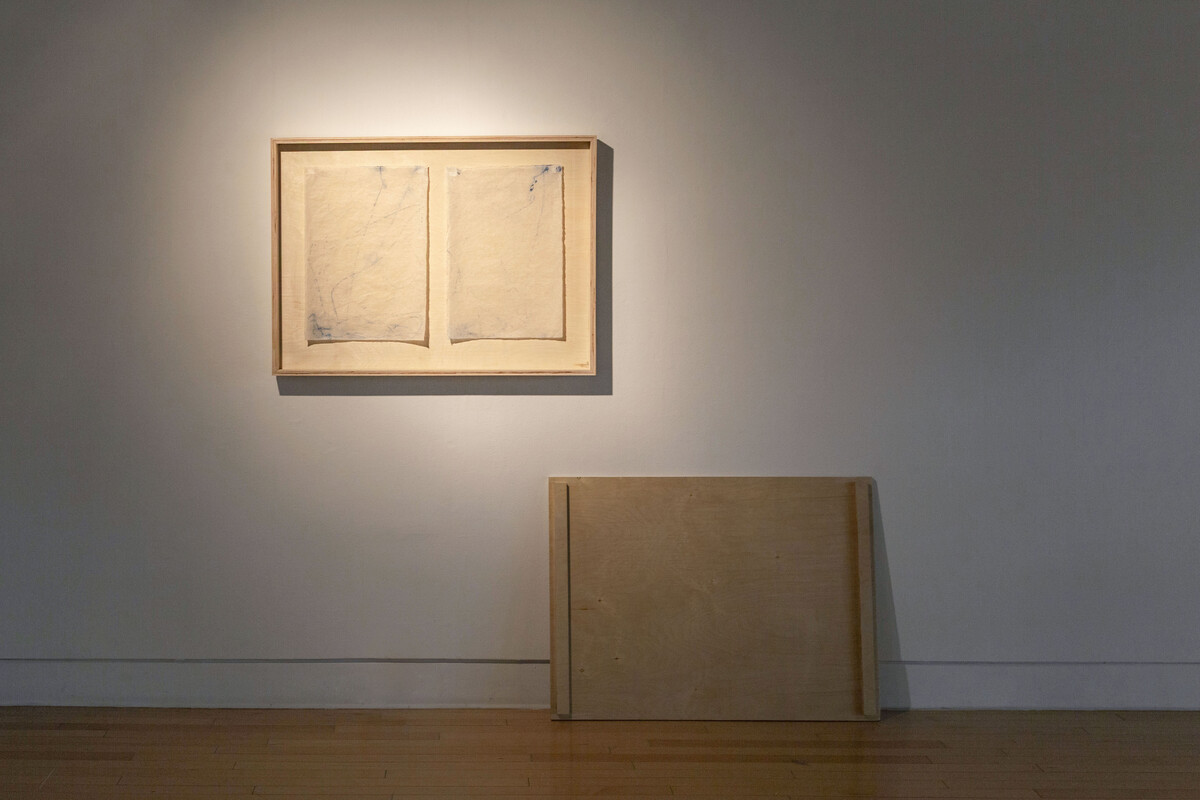
An Ocean Inside
Kate Sierzputowski
In the exhibition Gestures to Collect Songs from Afar, artist Soo Shin creates a body of work shaped by the invisible impact of water, distance, and memory. Drawing from personal histories, the exhibition offers several improvised gestures traced by natural forces. Water is not simply a metaphor, but a medium and collaborator—a transient presence that embodies the rhythms of human connection, grief, and migration. Across paper stirred by ocean swells, vessels stained by inherited seas, and dandelions caught mid-flight, Shin invites viewers into a fluid space between origin and arrival.
In 2024 Shin devised a tool that enables her to record the ocean’s movements, allowing water to act as a collaborator in her on-going piece Pas de Deux. To create the drawings that comprise the work, she floats a wooden vessel on the ocean’s surface, carrying a sheet of paper and two pigmented wooden balls.
As the water cascades towards and away from the shore, so do the objects, making marks across the paper in unpredictable rhythms. The spheres dance—just as Shin and the ocean do— tracing the force of the waves. These marks are not illustrations but imprints: a duet between persistence and pause. The selected drawings in the exhibition emphasize a non-linear timeline, each chosen for its representation rather than by date. Additionally, the wooden boxes used to transport the works remain part of the installation—visible reminders that the pieces are in transit.
For this second iteration, handmade Korean paper was used—echoing the place where the work came into being. An imagined stage holds this unscripted movement in Gestures to Collect Songs from Afar, the center work that lends the show its name. The work is the same size as Shin’s fully extended body and contains an alternate cast of dancers - dandelions forged in brass. Dandelions are plants built for motion: one flower can produce up to 150 seeds, and in the right wind, can travel up to 60 miles. A ramp of sand allows the audience entry into a ballet of imagined dispersals— observing a migration of uprooting and return of the flowers (and the audience’s own bodies) within the dance.
Pas de Deux and Gestures to Collect Songs from Afar both respond to unseen forces, tracing paths beyond their control. The works act as a record, physical testimonies to the experience of being moved—by time, by tide, by grief, by distance. The ocean and the wind act not as background elements, but as relational agents, shifting the form and path of what they touch. In this space, migration is perceived outside of a line from point A to B— an experience that is unfixed, open, and continuous.
In Portraits of Us (Oceans, Inherited), two stoneware vessels hold water residues from two different bodies of water: one from the Pacific, the other from the Yellow Sea, near where Shin’s father grew up. These works and their markings trace a deeper kind of connection: one not only shaped by distance, but by lineage. After her father’s passing, Shin observed his own memories of the sea, and how that water had quietly bound him to his past, just as she was bound to him through the ocean or what she considers a “living distance.”
This understanding of water as a connective, relational force came into focus during my pregnancy. The fluid that surrounded my daughter was like a private ocean—an invisible yet vital space that held us together, buffered us, and shaped our earliest gestures toward one another. It reminded me that the same water that connects oceans also connects us in our most personal, human ways. My sway, swayed her; her turn influenced mine. The water was silent to me, but a roar to her developing sense — a memory that now lives in her and provides comfort when imitated by white noise. The solace of the small sea that separated and united.
These relationships embedded in water reflect how we relate to each other across distances, imprinting on each others’ consciousness in subtle yet permanent ways. A line between water and shore is never consistent despite its appearance on maps, it constantly shifts as shorelines embrace the tide. Shin acts as biographer of the ocean, recording and embodying its gestures by translating its motion into form. The works echo a broader truth: that we are always being shaped by forces just beyond our grasp, and that our relationships, like tides, are fluid, recurring, and without clear beginnings or ends. Like the changing shoreline, the works inspire us to drift.




